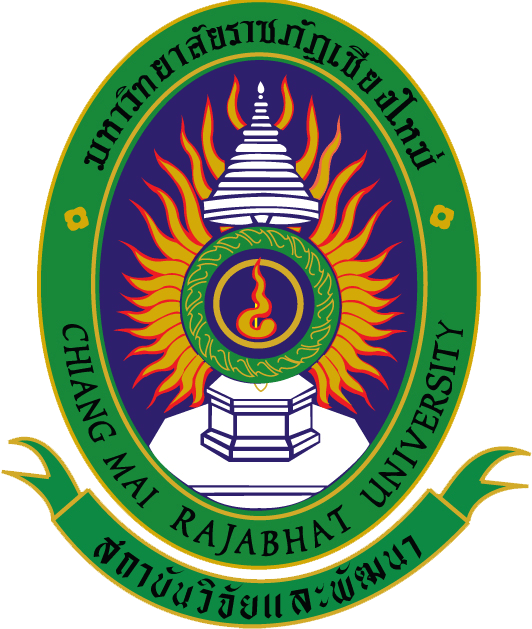
ระบบสารสนเทศงานวิจัย สถาบันวิจัยและพัฒนา มหาวิทยาลัยราชภัฏเชียงใหม่
Research Information System(RIS)
การประยุกต์เทคโนโลยีภูมิสารสนเทศในการประเมินพื้นที่เสี่ยงต่อการเกิดอุทกภัยในลุ่มน้ำแม่วาง จังหวัดเชียงใหม่
อาจารย์วรวิทย์ ศุภวิมุติ
คณะมนุษยศาสตร์และสังคมศาสตร์
เลขทะเบียน :
1524-65-HUSO-TSRI
บทคัดย่อ
งานวิจัยนี้ มีวัตถุประสงค์เพื่อ 1) เพื่อวิเคราะห์รูปแบบเชิงพื้นที่ของพื้นที่เกิดอุทกภัยในลุ่มน้ำแม่วาง 2) ศึกษาปัจจัยที่ที่มีความสัมพันธ์กับการเกิดอุทกภัยในลุ่มน้ำแม่วาง 3) เพื่อวิเคราะห์พื้นที่อ่อนไหวต่อการเกิดอุทกภัยโดยใช้ระบบสารสนเทศภูมิศาสตร์ร่วมกับแบบจำลองทางสถิติ และ 4) เพื่อประเมินพื้นที่เกษตรกรรมที่เสี่ยงต่อการเกิดอุทกภัย การศึกษานี้ดำเนินการโดยประยุกต์เทคโนโลยีภูมิสารสนเทศ เพื่อวิเคราะห์ข้อมูลพื้นที่น้ำท่วมที่เกิดขึ้นในอดีต และวิเคราะห์ปัจจัยที่มีความสัมพันธ์กับการเกิดน้ำท่วม 10 ปัจจัย ได้แก่ ความสูงภูมิประเทศ ความลาดชัน ทิศทางด้านลาด ดัชนีความแตกต่างพืชพรรณแบบนอร์มอลไลน์ ดัชนีความชื้นภูมิประเทศ ปริมาณน้ำฝน การระบายน้ำของดิน ความหนาแน่นทางน้ำ ความหนาแน่นถนน และการใช้ที่ดิน และนำมาวิเคราะห์หาความอ่อนไหวต่อการเกิดน้ำท่วม โดยใช้แบบจำลองดัชนีทางสถิติ และทำการประเมินประสิทธิภาพของการวิเคราะห์ และนำผลการศึกษามาประเมินความเสี่ยงของพื้นที่พื้นที่เกษตรกรรมและพื้นที่ชุมชนและสิ่งปลูกสร้างในลุ่มน้ำแม่วาง
ผลการศึกษาพบว่า ลุ่มน้ำแม่วางเคยเกิดน้ำท่วม 11.04 ตารางกิโลเมตร ส่วนใหญ่อยู่บริเวณที่ลุ่มด้านตะวันออกของลุ่มน้ำ ตำบลที่มีน้ำท่วมมากที่สุด ได้แก่ ตำบลสันติสุข และตำบลยางคราม อำเภอแม่วาง ผลการวิเคราะห์ปัจจัยที่สัมพันธ์ต่อการเกิดน้ำท่วม พบว่า ปัจจัยที่ส่งผลให้มีโอกาสเกิดน้ำท่วมมาก ได้แก่ ระดับความสูงภูมิประเทศ 283-485 เมตร ความลาดชัน 0.5.15 องศา ปริมาณน้ำฝน 1236-1380 มิลลิเมตรต่อปี ดัชนีความแต่งต่างพืชพรรณ 0.25-0.37 ดินที่มีการระบายน้ำเลว ความหนาแน่นถนน 5.31-7.34 และการใช้ที่ดินประเภทชุมชนและสิ่งปลูกสร้าง ส่วนปัจจัยที่มีอิทธิพลแสดงถึงโอกาสการเกิดน้ำท่วมต่ำ ได้แก่ ความลาดชัน 23.12-31.23 องศา ดัชนีความชื้นภูมิประเทศ 2.87-5.36 ดัชนีความแตกต่างพืชพรรณ 0.66-0.85 ปัจจัยการระบายน้ำดีความหนาแน่นถนน 2.67 - 4.07 และการใช้ที่ดินประเภทป่าไม่ผลัดใบ
ผลการวิเคราะห์ความอ่อนไหวต่อการเกิดอุทกภัยด้วยแบบจำลองดัชนีทางสถิติ ร่วมกับระบบสารสนเทศภูมิศาสตร์ พบว่า ลุ่มน้ำแม่วางมีความอ่อนไหวต่อการเกิดน้ำท่วมในระดับสูงมาก 65.11 ตารางกิโลเมตร ระดับสูง 59.81 ตารางกิโลเมตร ตำบลที่มีพื้นที่อ่อนไหวต่อการเกิดน้ำท่วมในระดับสูงมาก คิดเป็นพื้นที่มากที่สุด ได้แก่ ตำบลยางคราม อำเภอดอยหล่อ รองลงมาได้แก่ ตำบลบ้านกาด อำเภอแม่วาง และตำบลสันติสุข อำเภอดอยหล่อ ผลการประเมินประสิทธิภาพของแบบจำลอง มีค่าอัตราความสำเร็จคิดเป็นร้อยละ 94.84 และมีค่าอัตราการคาดการณ์คิดเป็นร้อยละ 94.85
ผลการศึกษายังพบว่า มีพื้นที่เกษตรกรรม 51.16 อยู่นพื้นที่ที่อ่อนไหวต่อการเกิดน้ำท่วมในระดับสูงมาก โดยเฉพาะด้านตะวันออกของลุ่มน้ำ และมีพื้นที่ชุมชนและสิ่งปลูกสร้างอยู่ในพื้นที่อ่อนไหวระดับสูงมาก 7.32 ตารางกิโลเมตร การเตรียมการรับมือกับการเกิดน้ำท่วม หน่วยงานปกครองส่วนท้องถิ่นควรนำระบบสารสนเทศภูมิศาสตร์และฐานข้อมูลเชิงพื้นที่มาใช้ในการจัดทำแผนการป้องกันและบรรเทาสาธารณภัย และใช้หลักการจัดการความเสี่ยงในลักษณะเชิงรุก ควรมีการการซักซ้อมการเผชิญสถานการณ์ การสร้างความร่วมมือระหว่างพื้นที่ต้นน้ำ กลางน้ำและปลายน้ำ รวมทั้งการรายงานข้อมูลสภาพอากาศ ปริมาณน้ำฝน และระดับน้ำในแม่น้ำอย่างต่อเนื่อง ควบคู่กับการสร้างความตระหนักและเสริมสร้างความรู้ให้กับประชาชน
Abstract
The four objectives of this study are to: 1) examine the spatial patterns of flood-prone areas in the Mae Wang River Watershed; 2) to study the factors influencing to flood occurrences in the Mae Wang River Watershed; 3) to analyze susceptible areas to flooding using geographic information systems (GIS) and statistical index modeling; and 4) to assess agricultural areas at risk of flooding. This study analyzes geographic information technology to analyze historical flood data and examines ten factors related to flood occurrences including elevation, slope, aspect, normalized difference vegetation index (NDVI), soil moisture index, rainfall amount, soil runoff, stream density, road density, and land use. These factors were analyzed to determine their vulnerability to flooding using Statistical Index (SI) modeling. Then, AOC was used to evaluate the efficiency of the analysis. The flood susceptibility results were used to assess the risk to agricultural and community area in the Mae Wang River Watershed.
According to the findings, flooding has occurred in 11.04 square kilometers of the Mae Wang River Watershed, mostly in the eastern of the region. Santisuk and Yangkhram in Mae Wang District are the subdistricts that are most susceptible to flooding. The analysis of factors that influence flooding revealed that the elevation levels between 283 and 485 meters, the slope between 0.5 and 15 degrees, the annual rainfall between 1,236 and 1,380 millimeters, the NDVI index between 0.25 and 0.37, the poorly draining soils, the road density between 5.31 and 7.34, and the land use for communities and built-up areas are the factors influencing to a higher susceptibility of flooding. In contrast, factors that indicated a low probability of floods were slope between 23.12 and 31.23 degrees, TWI index between 2.87 and 5.36, NDVI index between 0.66 and 0.85, well soil drainage, road density between 2.67 and 4.07, and area covered by forests.
The Mae Wang River Watershed is highly susceptible to flooding, with a very high susceptible area covering 65.11 square kilometers and a high susceptible covering for 59.81 square kilometers, according to a flood susceptibility analysis using statistical index modeling and geographic information systems. Very high flood susceptible area were mostly found in Yang Khram Sub-district of Doi Lo District, followed by Ban Kad Sub-district of Mae Wang District and Santisuk Sub-district of Doi Lo District. The model's performance evaluation revealed a success rate of 94.84% and a prediction rate of 94.85%.
The study also found that 51.16 square kilometers of agricultural areas, mostly in the eastern of the watershed, were located highly susceptible areas. Additionally, 7.32 square kilometers of communities and built-up were in very high susceptible areas. Local government organizations should use spatial databases and geographic information systems in developing disaster prevention and mitigation plans and use proactive risk management practices to prepare for flood mitigation. Upstream, midstream, and downstream regions should cooperate, and regular disaster readiness drills should be organized. Along with community awareness and education initiatives, regular monitoring of weather conditions, rainfall, and river water levels is necessary.
ไฟล์งานวิจัย
ข้อมูลการตีพิมพ์
ชื่อบทความ :
แหล่งที่ตีพิมพ์ :วารสารมนุษยศาสตร์และสังคมศาสตร์ มหาวิทยาลัยราชภัฏเชียงใหม่ ปีที่ 4 ฉบับที่ 1 พ.ศ. 2565
ปีที่ตีพิมพ์ :2565
ข้อมูลการนำไปใช้ประโยชน์
4 19 ส.ค. 2565
สำนักงานคณะกรรมการส่งเสริมวิทยาศาสตร์ วิจัยและนวัตกรรม (สกสว.)
สำนักงานคณะกรรมการส่งเสริมวิทยาศาสตร์ วิจัยและนวัตกรรม (สกสว.) ชั้น 14 อาคาร เอส เอ็ม ทาวเวอร์ 979/17-21 ถนนพหลโยธิน แขวงสามเสนใน เขตพญาไท กรุงเทพฯ 10400
02 278 8200
callcenter@trf.or.th, webmaster@trf.or.th